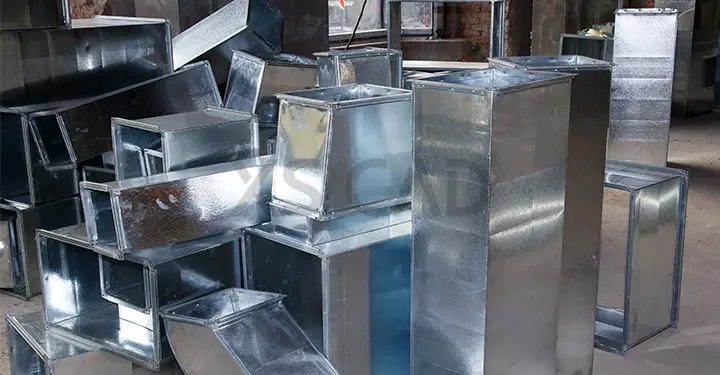Our Articles

Prefabrication in MEP Systems
What is MEP Prefabrication?
Prefabrication in MEP systems is the practice of manufacturing/assembling components of building services in a factory or other manufacturing site and transporting complete assemblies of MEP components or sub-assemblies to the relevant construction site. These assemblies are often known as MEP modules or prefabricated MEP modules. MEP prefabrication can be applied to buildings, such as data centres, where there are standard sizes of MEP components within structures. In commercial buildings, such as hotels, offices and shopping malls, due to variations in design and heating/cooling loads, modularisation, or the process of manufacturing tailor-made MEP components, is the perfect solution for MEP systems.
Types & Examples of MEP Prefabrication
A. Prefabricated Components:
B. Prefabricated Sub-assemblies or Modules:
B.1 Horizontal Ceiling Modules
A horizontal ceiling module should aim to include most, if not all, of MEP services components in the ceiling. Components that can be included are Sprinklers, Chilled water supply and return pipes, Condensate drain pipes, Sanitary drains, Plumbing, Town gas, Medical gas systems, Electrical, extra low voltage cabling with trunking, tray or cable ladders (typically, cables are drawn only after installation of modules on site to minimise cable jointing), Air-conditioning/mechanical ventilation ductwork, Light fixtures
B.2 Vertical Riser Modules
A vertical riser module comprises of vertical riser ducts and pipes. The vertical services in each riser module can be installed horizontally at ground level in the factory and can branch out to multiple floors. A riser module can be installed prior to, and independently of, the erection of riser shaft block walls. Also, riser modules can be lowered into the riser shaft through designated openings in the top floor. Therefore, lifting lugs and brackets should be incorporated in vertical riser module design.
C. Prefabricated Sub-assemblies with Architectural/Structural Components
D. Fully Integrated Assemblies
Prefabricated MEP plant modules are fully pre-assembled with control panels and instruments mounted on skids and lifting eyes for piping connections, valves’ cable termination for power supply and interfaces for building automation systems and fire alarm systems.
The pre-assembled and pre-wired equipment with control panels include:
MEP Prefabrication Process & Stakeholders

Benefits of Prefabrication
Requirements for Modular MEP Construction
Typically, challenges in modular MEP construction may occur during the latter stages of design or even after construction commences. These challenges can be largely avoided with effective and precise design early on. For increased productivity and reduced reworks, the drawings have to be accurate. Minor oversights could have major consequences for fabricators and installers. MEP prefabrication needs:
BIM in MEP Modular Construction
Multi-trade prefabrication requires a significant amount of pre-planning and design coordination. Building Information Modelling (BIM) is ideal for design coordination, construction planning, on-site delivery planning, clash detection and fabrication planning in modular construction. BIM improves communication between different stakeholders in the project and helps to get designers, construction teams and maintenance teams involved from the initial stages.
Is outsourcing BIM modelling a better option?
Future of Prefabrication
The prefabrication industry is still in its infancy. We expect to see it moving towards the use of advanced robotic manufacturing and assembly, which will allow a greater number of projects to be completed with the same amount of labour, providing better cost savings and better safety levels.

